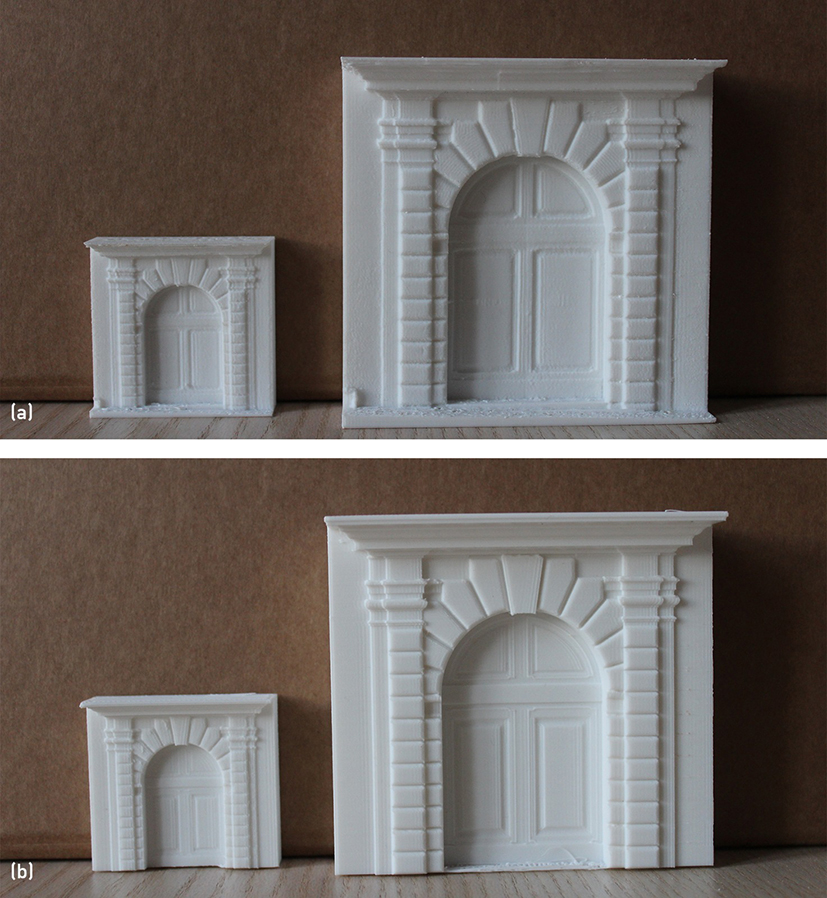
An operational workflow for documenting and communicating architectural heritage: from survey to 3D printing
Abstract
Digital surveying and rapid prototyping techniques are important tools to support processes related to cultural and architectural heritage. Digital surveying can be used to document, analyse, and enjoy the built heritage thanks to point clouds and detailed digital models resulting from the processing of data acquired during field activities. 3D printing, on the other hand, enables the creation of realistic physical replicas of heritage artefacts that can support activities related to analysis, documentation, conservation, valorisation and enjoyment. The use and combination of these techniques to architectural and cultural heritage have brought benefits and advantages since digital and physical replicas can be used in the processes of documenting, analysing, preserving and enhancing historical artefacts by promoting their accessibility on multiple levels.
The paper discusses the results of research aimed at defining and testing an effective workflow for the development of physical models suitable for the analysis, documentation and communication of architectural heritage. The experimentation was performed considering as a case study a peculiar element of architecture, a historical portal. The paper illustrates the technical challenges faced starting from the photogrammetric survey to the digital reconstruction of the analysed artefact for 3D printing, with a focus on the printing parameter settings used to produce physical replicas with high-quality, but different resolutions and scales, to be used for several purposes, such as analysis and documentation and education and communication.
DOI: https://doi.org/10.20365/disegnarecon.31.2023.18
Keywords
Full Text:
PDFReferences
Bonora, V., Tucci, G., Melucci, A., & Pagnini, B. (2021). Photogrammetry and 3D Printing for Marble Statues Replicas: Critical Issues and Assessment. Sustainability, 13(2), 680.
Brusaporci, S., Centofanti, M., & Vespasiano, L. (2020). La fabbrica nova de Lodovico Carli. Analisi storico-critica di Palazzo Carli a L’Aquila. Restauro Archeologico, 27(2), 50–69.
Brusaporci, S. (2017). The Importance of Being Honest: Issues of Transparency in Digital Visualization of Architectural Heritage. In A. Ippolito (Ed.), Handbook of Research on Emerging Technologies for Architectural and Archaeological Heritage (pp. 66-93). Hershey, Pennsylvania: IGI Global.
Centofanti, M., & Brusaporci, S. (2011). Il disegno della città e le sue trasformazioni. Città e storia, 1(IV), 151-187.
Elkhrachy, I. (2022). 3D Structure from 2D Dimensional Images Using Structure from Motion Algorithms. Sustainability, 14(9), 5399
Fatta, F., & Fischnaller, F. (2018). Enhancing cultural heritage exhibits in Museum Education: 3D Printing Technology. Video mapping and 3D printed models merged into immersive audiovisual scenography (FSJ-V3D Printing+MM Installation). In 2018 3rd Digital Heritage International Congress (DigitalHERITAGE) held jointly with 2018 24th International Conference on Virtual Systems & Multimedia (VSMM 2018) (pp. 1-4). IEEE.
Fu, H. (2023). Reverse modeling per la stampa 3D di complessi monumentali/Reverse Modeling for 3D Printing of Monumental Complexes. In M. Cannella, A. Garozzo, & S. Morena (Eds.). Transizioni. Atti del 44° Convegno Internazionale dei Docenti delle Discipline della Rappresentazione/Transitions. Proceedings of the 44th International Conference of Representation Disciplines Teachers (pp. 1310-1329). Milano: FrancoAngeli.
Gil-Piqueras, T., & Rodríguez-Navarro, P. (Eds.) (2023). Architectural and Archaeological Heritage. Workflow and Standards for the Survey. Disegnarecon, 16(30).
Kantaros, A., Soulis, E., & Alysandratou, E. (2023). Digitization of Ancient Artefacts and Fabrication of Sustainable 3D-Printed Replicas for Intended Use by Visitors with Disabilities: The Case of Piraeus Archaeological Museum. Sustainability, 15(17), 12689. doi:10.3390/su151712689
Marra, A. (2023b). Ricostruire le immagini attraverso la stampa 3D: applicazione ai reperti archeologici di Amiternum (AQ). In S. Brusaporci, P. Maiezza, A. Marra, I. Trizio, F. Savini, & A. Tata (Eds.), IMG23. Atti del IV Convegno Internazionale e Interdisciplinare su Immagini e Immaginazione | IMG23. Proceedings of 4th International and Interdisciplinary Conference on Images and Imagination (pp. 498-507). Alghero: Publica.
Parfenov, V., Igoshin, S., Masaylo, D., Orlov, A., & Kuliashou, D. (2022). Use of 3D Laser Scanning and Additive Technologies for Reconstruction of Damaged and Destroyed Cultural Heritage Objects. Quantum Beam Sci., 6(1), 11.
Picchio, F., Parrinello, S., & Barba, S. (2022). Drones and Drawings – methods of data acquisition, management, and representation. Disegnarecon, 15(29).
Scianna, A., & Di Filippo, G. (2019). Rapid prototyping for the extension of the accessibility to cultural heritage for blind people. Int. Arch. Photogramm. Remote Sens. Spatial Inf. Sci., 42, 1077-1082.
Sdegno, A., & Riavis, V. (2020). Toccare la profondità: restituzione prospettica e percezione aptica inclusiva. Disegnare Idee Immagini, 60, 72-83.
Torres-González, M., Cabrera Revuelta, E., & Calero-Castillo, A.I. (2023). Photogrammetric state of degradation assessment of decorative claddings: the plasterwork of the Maidens’ Courtyard (The Royal Alcazar of Seville). Virtual Archaeology Review, 14(28), 110–123.
Refbacks
- There are currently no refbacks.
Copyright (c) 2024 Adriana Marra, Luca Vespasiano
DISEGNARECON
ISSN 1828 5961
Registration at L'Aquila Law Court no 3/15 on 29th June, 2015.
Indexed in SCOPUS. Diamond Open Access. All papers are subjected to double blind peer review process by qualified reviewers.
Journal founded by Roberto Mingucci
